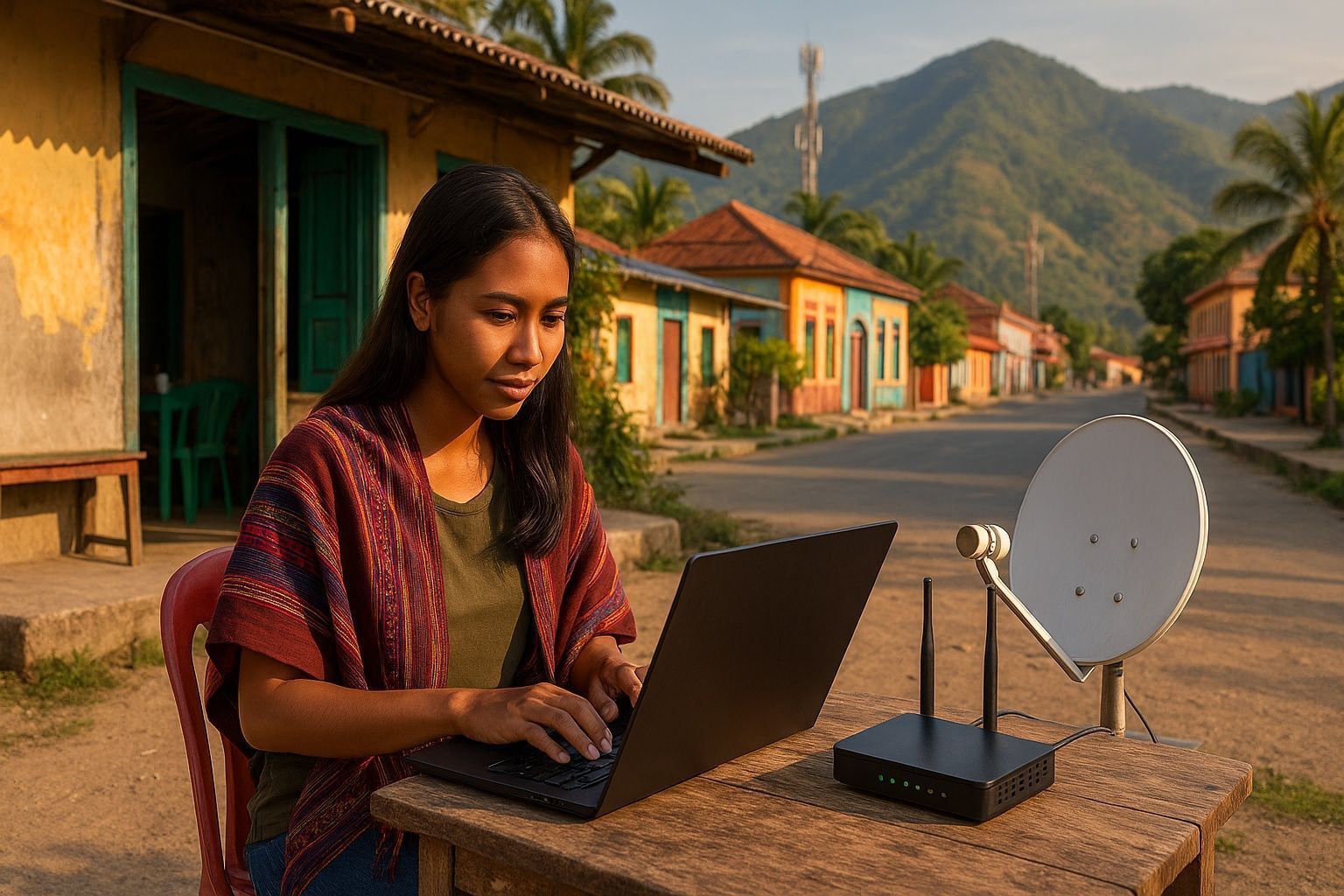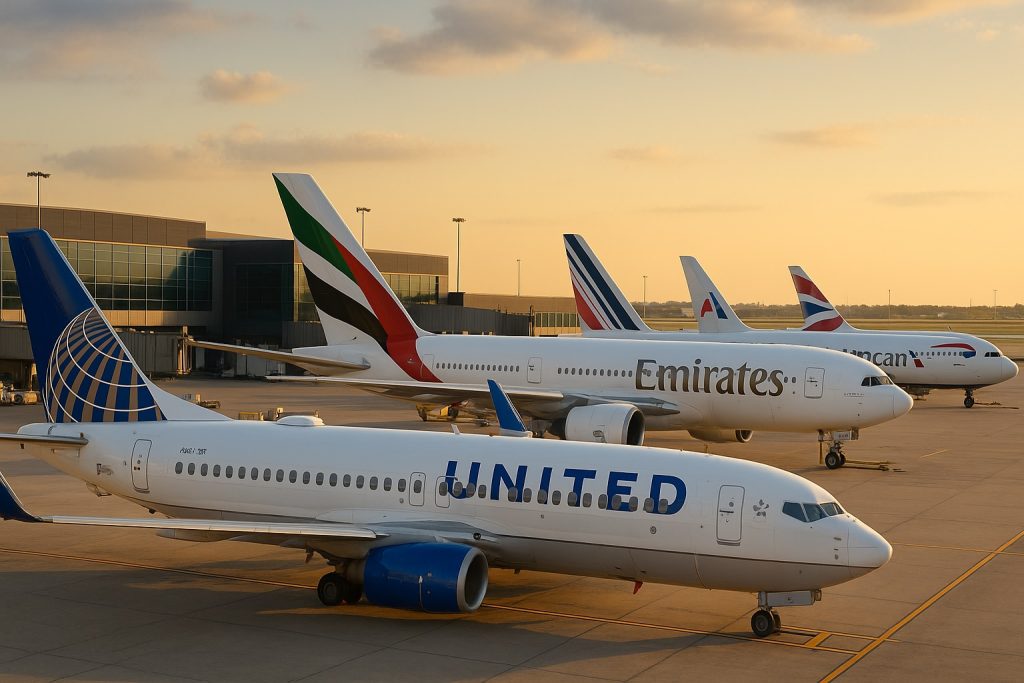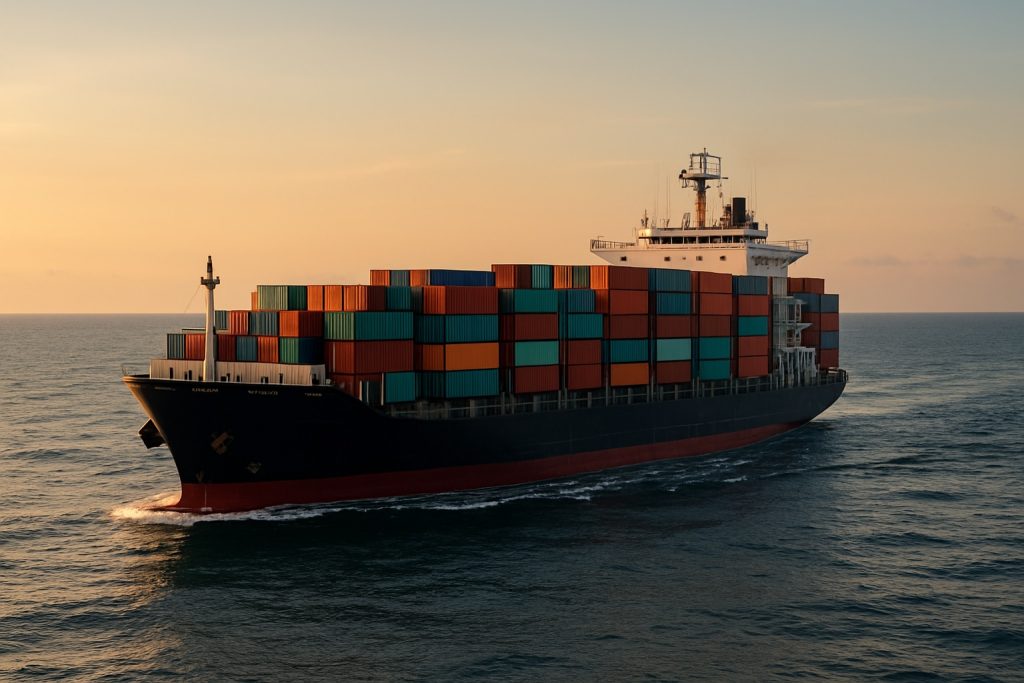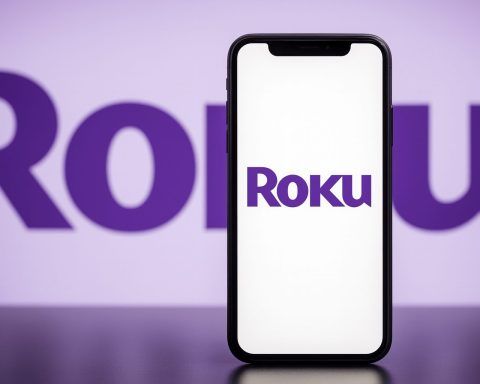- In June 2024, Timor-Leste landed the TLSSC submarine cable, about 607 km to Australia with 27 Tbps capacity, built by Alcatel Submarine Networks, connecting Dili to Australia’s NWCS via Darwin and Port Hedland.
- Starlink launched in Timor-Leste in December 2024, becoming the 116th country with Starlink coverage and achieving nationwide signal by December 13, 2024.
- As of Jan 2025, internet users numbered 486,000 (34.5% of the population), down from 742,000 (54.2%) in Jan 2024 due to updated methodologies.
- Timor-Leste’s population is about 1.41 million (roughly 33% urban) with a median age around 21–22 years and about 74% under 35.
- The three main operators—Timor Telecom, Telkomcel, and Telemor—provide voice/SMS coverage to about 95–98% of the population, and 4G LTE is now available across all 13 districts, covering roughly 90% of the territory.
- Fixed broadband subscriptions remain under 2% of households, and in 2024 the median mobile data speed was 4.8 Mbps while fixed broadband median was 6.1 Mbps, ranking Timor-Leste among the slowest nations (19th slowest of 229 in 2024).
- International connectivity previously relied on satellites and microwave links; the TLSSC is expected to reduce wholesale bandwidth costs by up to 50% once fully online in mid-2025.
- In 2024 the government licensed Starlink, Gonsoa, and NerraVi Networks and established the Autoridade Nacional de Comunicações to regulate spectrum and licensing.
- The Timor-Leste Digital 2032 strategy (2022–2032) aims to expand e-government, digital education, e-health and digital agriculture, backed by better connectivity.
- Timor-Leste’s upcoming ASEAN membership could unlock regional digital cooperation and financing for telecom projects and satellite initiatives.
Timor-Leste (East Timor) is making strides to overcome a long-standing digital divide. For years, this young Southeast Asian nation has grappled with low internet penetration, high costs, and slow speeds – a stark contrast to its more connected neighbors. However, recent developments such as the rollout of a submarine fiber-optic cable and the arrival of satellite internet services promise to transform the country’s digital landscape. This report provides a comprehensive overview of the state of internet access in Timor-Leste as of 2025, covering usage rates, infrastructure, service providers, challenges, government initiatives, the impact of satellite internet (e.g. Starlink), regional comparisons, and emerging opportunities for improving connectivity.
Internet Penetration Rates and User Demographics
Internet usage in Timor-Leste remains relatively low but is on a gradual rise. As of early 2025, approximately 486,000 individuals in Timor-Leste were using the internet, representing 34.5% of the population [1]. This means roughly two-thirds of citizens are still offline. Notably, this figure is a downward revision from an earlier estimate of ~742,000 users (54.2% penetration) reported in 2024 [2]. The discrepancy reflects updated data methodologies – the reality is that many Timorese maintain multiple mobile subscriptions (for voice/SMS or different providers) which previously led to overestimation of “internet users.” In any case, around 900,000 people (65% of the populace) remain without internet access in 2025 [3], underscoring the significant room for growth.
Demographically, Timor-Leste’s user base is overwhelmingly young. The country’s median age is only about 21–22 years, and an estimated 74% of the population is under 35 [4]. These digitally native youths are eager to get online for education, entrepreneurship, and social connection. Women and men are about equally represented in the population ( ~50% each [5] ), though detailed data on gender gaps in internet use are limited. There is also a notable urban-rural divide: only one-third of Timor-Leste’s 1.4 million people live in urban areas [6] (mostly in the capital, Dili), with the majority in rural and remote communities. Unsurprisingly, internet uptake is higher in Dili and other towns than in mountainous rural villages where connectivity is scarcer. Still, social media adoption is substantial given those online – about 589,000 social media accounts were active in early 2025 (nearly 42% of the population) [7], indicating that most internet users engage in social networks and content sharing. The table below summarizes key connectivity indicators:
| Indicator (Year) | Value |
|---|---|
| Population (2025) | ~1.41 million (33% urban) [8] |
| Internet users (Jan 2025) | 486,000 (34.5% of population) [9] |
| Internet users (Jan 2024) | 742,000 (54.2% of population) [10] |
| Offline population (Jan 2025) | ~923,000 (65.5% of population) [11] |
| Active mobile connections (2025) | 1.75 million (124% of population) [12] |
| Fixed broadband subscriptions (2025) | < 2% of households [13] |
| Active social media users (2025) | 589,000 (41.8% of population) [14] |
| Median fixed internet speed (2024) | 6.10 Mbps (ranked 19th slowest of 229 countries) [15] |
| Median mobile internet speed (2024) | 4.85 Mbps [16] |
Internet penetration in Timor-Leste significantly lags behind the global average (~67%) and even most of its Southeast Asian neighbors. By comparison, in Indonesia about 76% of the population uses the internet [17], and Malaysia and Singapore boast well over 80%–90% usage. Timor-Leste’s relatively low usage rates are not due to lack of interest – the country’s youth are enthusiastic about digital technology – but rather due to infrastructure and access challenges discussed later in this report. The demand is there: young Timorese already leverage whatever connectivity they have for education, small business marketing, and social activism in creative ways. With the median Timorese user being young, mobile-first, and often multilingual (using English or Indonesian content in lieu of limited local Tetum content online [18]), there is tremendous potential if connectivity can be expanded. The stage is set for a leap in internet adoption as new infrastructure comes online.
Infrastructure Status: Mobile, Broadband, and International Connectivity
Mobile Networks: Mobile telephony is the primary mode of connectivity for most Timorese. The country had about 1.75 million mobile cellular connections active in early 2025, which is 124% of the population [19] – a penetration rate above 100% because many people use multiple SIM cards or phones. Timor-Leste has three main telecom operators: Timor Telecom (TT), Telkomcel, and Telemor, which until recently enjoyed a triopoly in the market. Timor Telecom was the state concession holder from 2003 until liberalization in 2012, after which Telkomcel (owned by Telin, a subsidiary of Indonesia’s Telkom) and Telemor (operated by Viettel of Vietnam) entered the market [20] [21]. Telemor has since grown rapidly and is considered the leading mobile provider by subscriber numbers [22], though all three companies jointly provide network coverage to approximately 95–98% of the population (at least for basic voice/SMS service).
All three operators run 2G/GSM and 3G (HSPA) networks nationwide, and since 2017 have also deployed 4G/LTE in major areas [23] [24]. In fact, 4G LTE coverage now extends across all 13 districts, covering roughly 90% of Timor-Leste’s territory [25]. Despite this, the quality of mobile internet has historically been poor. As of 2024, the median mobile data speed was only 4.8 Mbps [26], and the country’s overall internet speeds ranked among the slowest 20 nations globally [27]. Users often experience high latency and network congestion. Part of the reason is that, until recently, Timor-Leste lacked any direct fiber-optic link to the global internet, forcing telecom operators to rely on limited-capacity satellite and microwave connections for international bandwidth. This bottleneck kept speeds low and prices high.
Fixed Broadband: Terrestrial broadband infrastructure in Timor-Leste is in its infancy. Fixed-line telephone penetration is very low, and fixed broadband subscriptions reach fewer than 2% of households [28] – one of the lowest rates in the Asia-Pacific. Outside of certain government offices, businesses, and expat hotels in Dili that have VSAT (satellite) links or point-to-point wireless links, home broadband service has not been widespread. Timor Telecom operates a small fiber and copper network in parts of Dili, and in recent years it has gradually expanded a terrestrial fiber backbone linking some districts [29]. This has started to enable DSL or fiber-to-the-premises for a limited number of customers in urban centers. Still, the vast majority of Timorese access the internet (if at all) via mobile data on their phones. Prior to 2025, international internet traffic for the entire country was handled via satellite providers and a few microwave radio links to neighboring Indonesia, resulting in extremely expensive bandwidth and patchy performance [30]. The median fixed broadband speed in tests was just 6.1 Mbps as of 2024 [31], and even that small capacity was priced far out of reach for most citizens (some residents reported paying ~$40–$50 per month for 1–2 Mbps DSL links in Dili [32]). Clearly, improving backhaul and backbone infrastructure is critical to better service.
The New Submarine Fiber-Optic Cable: A game-changer for Timor-Leste’s infrastructure is the recent deployment of its first-ever submarine fiber optic cable. In June 2024, the government celebrated the landing of the Timor-Leste South Submarine Cable (TLSSC), a undersea fiber system linking Dili directly to Australia’s network [33]. The TLSSC spans about 607 km from Timor-Leste to the Northern Territory of Australia and is designed with a massive 27 terabit-per-second capacity [34] [35] – orders of magnitude more bandwidth than the country has ever had. This cable connects into Australia’s North West Cable System (NWCS) via Darwin and Port Hedland, effectively plugging Timor-Leste into high-speed internet backbones. Alcatel Submarine Networks built the system, which includes seven optical repeaters along the route and even a branch connection to the offshore Greater Sunrise gas field region [36].
By early 2025, the submarine cable was in testing phase and nearing operational readiness. Engineers from Timor-Leste and Vocus (the Australian partner company) conducted tests and resolved a few minor faults in the link as of January 2025 [37] [38]. The government is establishing a new state-owned enterprise to manage this international fiber asset and wholesale the bandwidth to all local telecom operators on an open-access basis [39]. Once fully online (expected by mid-2025), the impact of the TLSSC will be profound: internet speeds should increase, latency will drop, and bandwidth costs could decline by as much as 50% according to official projections [40]. In short, Timor-Leste is on the cusp of moving from last-mile connectivity via satellite to fiber-grade service, ushering in a “fiber-optic future” for its citizens.
Key Internet Service Providers (ISPs) and Access Options
For most Timorese, the “ISPs” are essentially the mobile network operators themselves – Timor Telecom, Telkomcel, and Telemor – as they provide the bulk of internet access through cellular data plans. These three offer similar tiers of prepaid data bundles, typically costing on the order of a few dollars for limited data (e.g. $5 for 1–2 GB, etc.), which is expensive by regional standards given the low incomes in Timor-Leste [41]. Timor Telecom (the former incumbent) also provides some fixed broadband services in Dili, including ADSL and a small fiber-to-the-home network for corporate or government clients. Telemor and Telkomcel have dabbled in fixed-wireless internet and public Wi-Fi hotspots, but their core business remains mobile. Telemor, backed by Viettel, has aggressively expanded coverage and was reported to hold about 47% market share by 2017 [42], leveraging its investments to reach rural areas and even deploying medium-earth-orbit (MEO) satellites for backhaul. In fact, Telemor has partnered with SES’s O3b satellite constellation since 2015 to obtain low-latency, high-throughput backhaul links for its 3G/4G towers [43]. This helped improve data quality somewhat despite the absence of a submarine cable, and allowed Telemor to boast mobile data coverage even in remote villages. Telkomcel (Telin) similarly utilizes satellite and microwave connectivity from Indonesia’s infrastructure to serve its network.
Until late 2024, these three telcos were essentially the only internet providers in the country. Recognizing the need for more competition and innovative solutions, the government opened the market to new entrants. In August 2024, licenses were granted to three additional telecom companies: Starlink, Gonsoa, and NerraVi Networks [44]. Starlink, operated by Elon Musk’s SpaceX, is a satellite internet provider (discussed more below). Gonsoa and NerraVi are newer local ISPs aiming to provide broadband services; they have not yet become household names, but their entry signals an attempt to diversify the market beyond the big three. The arrival of these players ended the long-standing scenario where “the market… consisted of just Timor Telecom, Telkomcel, and Telemor” [45].
Satellite Internet and Starlink: By the end of 2024, Starlink officially launched its service in Timor-Leste, making it the 116th country with Starlink coverage [46]. Starlink’s constellation of low-earth orbit satellites can deliver broadband speeds (50–150 Mbps) to any user with a satellite dish, potentially revolutionizing internet access in rural Timor-Leste where cell towers are sparse. As of December 13, 2024, Starlink announced its signal covered the entire country [47]. Government officials hailed this technology for its ability to bring high-speed internet to remote regions “where coverage via fiber optic cables will still require more time to implement” [48]. In practical terms, a farmer in the highlands or a school in an isolated village can now get a fast internet link via Starlink without waiting years for terrestrial networks to extend.
However, Starlink’s service comes at a price: the required hardware kit costs around $390, and a residential subscription is about $50 per month in Timor-Leste [49]. This is a steep price in a country where roughly 42% of citizens live below the poverty line [50] and where even basic mobile data is considered expensive. For comparison, the Asia Foundation noted that Timorese pay more for mobile data than any other country in Southeast Asia as of 2022 [51] – a reflection of the high operating costs in a satellite-dependent network. Thus, while Starlink technically makes high-speed connectivity available, affordability is a major concern. To mitigate this, Starlink could consider flexible pricing; unlike traditional ISPs, Starlink has no long-term contracts and can adjust prices monthly, and it has offered regional discounts in other developing markets [52]. If such price reductions reach Timor-Leste, satellite broadband might become accessible to more middle-class and even rural communities (for instance, through community Wi-Fi sharing of a single Starlink connection).
In addition to Starlink, Timor-Leste’s telcos will likely continue to rely on geostationary satellites and MEO satellites for certain links, especially for redundancy. Telemor’s ongoing partnership with SES’s O3b network (which orbits in medium-Earth orbit to reduce latency) is set to continue, enabling the operator to “deliver upgraded mobile connectivity” and handle growing data demand until the fiber cable is fully operational [53] [54]. There are also regional initiatives afoot – for example, Australia has indicated plans to extend some satellite services to Timor-Leste for emergency connectivity and the Pacific Satellite program might eventually include Timor-Leste in broader Oceania satellite coverage. Overall, satellite internet (both low-orbit like Starlink and medium/high-orbit systems) is now a crucial component of Timor-Leste’s internet ecosystem, filling in the gaps where ground infrastructure doesn’t reach.
Challenges to Internet Access in Timor-Leste
Despite recent progress, Timor-Leste faces significant challenges in expanding internet access, stemming from a mix of geographic, economic, and policy factors:
- Geographic Terrain and Dispersed Population: Timor-Leste’s topography is mountainous and rugged, with many villages perched on difficult-to-reach highlands. About 30% of the population lives in remote or hard-to-reach areas where laying fiber or even maintaining cell towers is logistically challenging [55]. The cost to extend physical infrastructure to these areas is high, and the small population (scattered in many tiny hamlets) means there’s limited commercial incentive for operators. This geography-induced gap has left some communities with either very weak 2G signals or no coverage at all. It also means that even where there is a mobile signal, backhaul (connection from the cell tower to the core network) might rely on point-to-point radio links that are less robust. Satellite solutions (like Starlink or VSATs) are one way to reach these areas, but uptake will depend on affordability and local capacity to maintain equipment.
- High Costs and Low Affordability: The cost of internet access in Timor-Leste is among the highest in the region relative to income [56]. Historically, bandwidth had to be purchased via satellite, which is far more expensive than via fiber cables. These costs were passed to consumers: even a basic mobile data pack could consume a large share of a household’s budget, and fixed-line internet (where available) was a luxury for most. As noted, Starlink’s $50/month fee is beyond the reach of the average Timorese. The good news is that the new submarine cable is expected to slash wholesale bandwidth prices by up to 50% [57], which should eventually translate into cheaper data plans. But other cost barriers persist, such as the need for devices (smartphones, modems) and reliable electricity. Many rural users only intermittently go online when they can afford a top-up, illustrating that poverty remains a core barrier to continuous internet usage.
- Reliability and Quality of Service: Even for those who can get online, unreliable service is a common complaint. Until improvements in late 2024, users in Dili and beyond reported frequent network outages and downtime [58]. It was not uncommon to have to reload pages repeatedly or experience dropped calls due to network hiccups. In rural areas, slow speeds mean that data-heavy activities (Zoom calls, large downloads) are often impractical. A coping strategy has been “SIM card swapping” – many Timorese carry SIMs from all three operators and switch between them to find whichever has a signal at a given moment or location [59]. This speaks to the patchiness of coverage and quality; no single network has been universally reliable across the country. Such instability hinders businesses and e-government services, as even those with internet access cannot always count on it for critical tasks.
- Limited Infrastructure & Last-Mile Connectivity: As described, fixed broadband infrastructure (fiber/cable/DSL) barely exists for residential use, so the country leans on mobile networks that have limited capacity. Many cell towers in Timor-Leste are not connected by fiber optic lines (as they would be in more developed networks) but by older microwave links or satellite backhaul, which constrains the bandwidth they can provide. Furthermore, electricity is not 24/7 in some villages, affecting the uptime of telecom equipment and charging of devices. Last-mile connectivity – getting the internet from a main road to the end-user in the village – is a real challenge. Community Wi-Fi networks or small ISPs are still nascent. The government’s digital strategy documents acknowledge that “access, data speed, and affordability are major issues… the small broadband market relies on mobile connectivity and expensive satellite connections”, and while steps are being taken (fiber, etc.), concrete measures for improving last-mile access need more clarity [60].
- Regulatory and Market Challenges: Timor-Leste’s telecom market is small, which historically made it less attractive for big investments. The government had a monopoly arrangement with Timor Telecom for a decade (2003–2012), which some analysts believe slowed innovation and kept prices high during those years. Even after opening the market, the three operators did not aggressively undercut each other – perhaps due to the high fixed costs of service and the difficulties of the terrain. Only recently has the government begun pushing for more competition (via new licenses) and creating an independent regulator (the National Communications Authority) to oversee spectrum and licensing. Policy barriers such as bureaucratic red tape for infrastructure projects, and high import taxes on telecom equipment (which raise network rollout costs), have also posed challenges in the past. The regulatory environment is improving, but building institutional capacity for telecom regulation is an ongoing effort.
- Digital Literacy and Local Content: While not a physical access issue, it’s worth noting that digital literacy and content relevance are challenges too. A large portion of the population is not fluent in the internet’s dominant languages (English, etc.), and there is limited content in Timor’s official languages (Tetum and Portuguese). Young people often consume content in Indonesian or English [61]. Efforts to increase locally relevant digital content and to train citizens in digital skills (how to use the internet safely and effectively) are still in early stages. Without such efforts, even if infrastructure improves, the full socio-economic benefits of connectivity might not be realized.
In summary, the hurdles for Timor-Leste are multi-faceted: connecting a challenging terrain, making internet affordable to a low-income populace, ensuring networks are robust and widespread, and creating an enabling environment (policy, skills, local content) for people to use the internet productively. The next sections discuss how the government and its partners are addressing these issues.
Government Plans and Digital Strategy for Expansion
The Timor-Leste government recognizes that improved internet access is vital for the country’s development and has put forward several plans and initiatives to accelerate digital inclusion. Central to this is the “Timor Digital 2032” strategy – a ten-year national plan (2022–2032) aimed at developing the ICT sector and integrating digital technologies across governance, economy, and society [62]. The Timor Digital 2032 plan emphasizes expansion of e-government services, digital education, e-health, and even digital agriculture, underpinned by better connectivity. In launching the strategy, officials have framed digital infrastructure as an urgent priority to diversify the economy beyond oil revenues [63]. However, observers note that the public-facing documents of this plan do not yet spell out detailed measures to increase internet access or affordability for the general population [64]. This suggests that while the vision is in place, concrete action plans are still being formulated.
One very tangible government-led project is the submarine fiber-optic cable (TLSSC) discussed earlier. This project was pursued at the highest levels: Timor-Leste signed agreements with Australia in 2019 and 2022 to make the international cable a reality [65] [66]. Approximately US $41.6 million was allocated from the state budget in 2022 for the cable’s procurement and installation [67]. The 9th Constitutional Government under Prime Minister Xanana Gusmão (as of mid-2023) has continued to champion the completion of this cable, viewing it as foundational infrastructure. In fact, at the cable landing event in mid-2024, Minister of Transport and Communications Miguel Manetelu declared the TLSSC “a crucial component for Timor-Leste, as it will provide internet access to all Timorese throughout the country,” heralding its expected benefits for education, economic growth, and even tourism [68]. The Council of Ministers even took the symbolic step of naming each undersea repeater after national heroes, underlining the cable’s importance to the nation’s future [69]. The government’s plan once the cable is operational is to act as a wholesale provider of bandwidth (via a new state company) so that all retail telecom operators can access international capacity at equal, reduced rates [70]. This is intended to prevent any single company from monopolizing the new bandwidth and to ensure the cost savings translate into cheaper internet for consumers.
Beyond infrastructure, the government is also working on the policy and institutional framework to support digital growth. A National Communications Authority (Autoridade Nacional de Comunicações) has been established to regulate telecom and spectrum, and it took notable actions in 2024 such as licensing new entrants and allocating spectrum for 4G improvements. The government, with support from development partners, is drafting or enacting laws on cybersecurity, data protection, and cybercrime – to provide a safer environment for online activity [71]. In the sphere of e-government, Timor-Leste has partnered with the European Union (through the PADIT-TL project) and the Asian Development Bank to fund digital government infrastructure [72] [73]. For instance, an EU grant of €3 million is supporting the development of e-governance services and digital literacy programs for civil servants [74]. Such initiatives will indirectly spur internet usage, since as government services (like civil registries, tax filings, school registrations, etc.) come online, citizens have more incentives to get connected.
The political leadership has consistently voiced support for expanding connectivity. Prime Minister (and former independence leader) Xanana Gusmão noted in a 2024 speech that “a modern and inclusive telecommunications network is fundamental to building a strong economy, providing better public services, and creating jobs and opportunities for our people” [75]. This sentiment is echoed across party lines – improving internet access is seen not as a luxury but as a necessity for nation-building in Timor-Leste’s third decade of independence. Moving forward, the government’s challenge will be to implement last-mile solutions (possibly through public-private partnerships or subsidies for rural access), nurture the new market entrants for healthy competition, and continue to seek international cooperation. Notably, Timor-Leste is poised to become a full member of ASEAN, and it has been actively learning from regional neighbors on digital policy; for example, officials participated in Vietnam’s International Digital Week 2024 to discuss best practices [76]. All these efforts form a mosaic of a digital strategy that, if executed well, could rapidly raise internet penetration and bridge the digital divide in the coming years.
Availability and Impact of Satellite Internet Services
Satellite internet has historically been a behind-the-scenes workhorse for Timor-Leste’s connectivity, but it is now stepping into a more prominent role with consumer-facing services like Starlink. As mentioned, prior to the fiber cable, virtually all international traffic to Timor-Leste went over satellites – either traditional geostationary satellites (which have high latency and limited bandwidth) or the O3b MEO satellites used by Telemor (which improved latency to ~150 ms and provided moderate throughput). These satellite links kept the country online, though at a low level of performance. The impact of satellite connectivity can be seen in how even remote parts of the country got basic telecom coverage: for instance, Telemor could advertise mobile data availability in every district largely because it could hook up cell towers via O3b satellites where no fiber or microwave link existed. This prevented Timor-Leste from being completely dark in terms of internet, but quality was constrained and costs were high due to satellite bandwidth pricing.
The advent of LEO satellite internet (Starlink) takes this to the next level by offering end users a direct satellite link with speeds potentially 10-20x faster than legacy VSAT links. Since Starlink’s launch in late 2024, early adopters in Timor-Leste (likely businesses, NGOs, and tech-savvy individuals) have started using it to obtain broadband in places that never had it. For example, a remote health clinic or a school can now equip a Starlink dish and instantly have a connection capable of streaming video or participating in online training – activities that were nearly impossible over the old networks. The coverage across the entire country means that islands like Atauro, the enclave of Oecusse, and mountainous interiors are on equal footing with Dili in terms of signal availability [77]. The government is optimistic that Starlink and similar technologies will “bring high-speed internet to remote regions” and complement the rollout of fiber on land [78]. Indeed, fiber and Starlink are viewed as complementary: fiber will connect major hubs and towns with very high capacity, while satellites can reach the “last mile” communities that fiber won’t get to for some years.
That said, the immediate impact of Starlink is tempered by its cost. At $50 per month, the service targets institutions and higher-income users more than the average family. We are likely to see banks, government offices in districts, and small ISPs (or community cooperatives) being the main Starlink subscribers initially. Those entities might then redistribute the connectivity – e.g. a local entrepreneur could use a Starlink connection to provide Wi-Fi to a cluster of households or a village school, effectively acting as a micro-ISP. If the government or donors step in with subsidies or bulk purchases of Starlink units (perhaps for all schools or clinics), the impact could quickly scale up, transforming education and healthcare delivery in rural Timor-Leste by connecting those facilities to global information resources. There is also the potential for price competition: Starlink’s presence might push the existing telcos to improve their offerings (e.g., better unlimited data plans or deploying their own satellite-based solutions) in order not to lose high-end customers.
It’s worth noting that Starlink is not the only new player in the satellite arena: NerraVi Networks and Gonsoa, the two other newly licensed ISPs in 2024, could be looking to partner with satellite providers or deploy innovative wireless tech. Their exact plans have not been publicized, but given Timor-Leste’s conditions, it is plausible they will use a combination of satellite backhaul and terrestrial wireless (like Wi-Fi or LTE) to reach underserved areas. In essence, the country could see a hybrid connectivity model emerge – fiber connecting the main nodes (cities, cell towers) and satellites connecting the hard-to-reach endpoints – all coordinated in a way that users experience a faster, more reliable internet than before.
On a regional level, Timor-Leste is part of a broader trend of satellite internet expansion in Southeast Asia-Pacific. Besides Timor-Leste, Starlink has gone live in the Philippines, Malaysia, and Indonesia, among others [79]. In Indonesia, for example, Starlink is being tested to connect rural health clinics and support e-commerce in far-flung islands [80]. These use cases are very relevant to Timor-Leste as well. The presence of Starlink in multiple ASEAN countries might also lead to regional cooperation on satellite regulation and perhaps bulk procurement to reduce costs. Additionally, Southeast Asia is becoming something of a hub for SpaceX’s supply chain (with satellite components now being made in Vietnam and Thailand) [81], which indicates the company’s long-term commitment to the region. All told, satellite internet’s impact in Timor-Leste is just beginning – it has already expanded availability, and in the next few years, with cost adjustments and creative deployment, it could significantly narrow the urban-rural connectivity gap.
Regional Comparisons and Context
In the context of Southeast Asia and the Pacific, Timor-Leste has been an outlier in connectivity – but this is slowly changing. Most ASEAN countries enjoy far higher internet penetration and more advanced infrastructure. For instance, as noted, Indonesia’s internet penetration is around 76% [82], and countries like Malaysia, Vietnam, and Thailand all report 70–80%+ of their populations online. Even the Philippines, which has its own archipelagic connectivity challenges, has about 73% internet penetration and multiple submarine cables landing on its shores. Timor-Leste’s ~34–54% penetration (depending on the estimate) is closer to the lower end in the region, comparable only to nations like Myanmar or Laos a few years ago. It is also behind some small Pacific Island states in percentage terms – for example, Fiji and Samoa have surpassed 50-60% usage – although those countries benefited from early submarine cable projects.
In terms of internet speed, Timor-Leste has ranked near the bottom globally. In 2024 it was reported as having the 19th slowest internet out of 229 tested countries [83]. This puts it in the company of the least developed African and Asian nations in connectivity terms. By contrast, Southeast Asian neighbors like Singapore rank among the fastest in the world, and even countries like Vietnam and Thailand have average fixed broadband speeds well above 50 Mbps (versus Timor-Leste’s 6 Mbps). The new submarine cable should boost Timor-Leste’s speeds dramatically and could see it catch up to at least regional averages in the coming years, assuming last-mile networks can deliver the bandwidth to users.
One area of stark difference is cost of data. As mentioned, Timor-Leste has had the highest mobile data costs in Southeast Asia [84]. While 1 GB of mobile data can cost under $1 in some ASEAN markets, in Timor-Leste it might cost several dollars, which is prohibitive given local incomes. This disparity is expected to lessen once competitive pressure and cheaper bandwidth from the fiber cable take effect. In fact, regional initiatives like the ASEAN Digital Masterplan encourage member states (which Timor-Leste is set to join) to reduce the digital divide and promote affordable internet as a driver of economic growth. Timor-Leste will likely draw on the experience of neighbors like Indonesia, which expanded rural internet through its “Bakti” satellite program and universal service funds, and Vietnam, whose Viettel (Telemor’s parent) has excelled at low-cost rural telephony.
Another point of comparison is infrastructure diversity. Most countries in the region have multiple submarine cables and often cross-border terrestrial fiber links; Timor-Leste is just now getting its first international fiber link. Similarly, 5G mobile networks are being rolled out or are already in use in countries like Indonesia, Thailand, and Philippines, whereas Timor-Leste has not yet launched 5G (and likely will focus on maximizing 4G utilization first). On the positive side, Timor-Leste’s late start means it can adopt cutting-edge technology without legacy constraints – for example, deploying the latest generation of 4G/5G equipment or leveraging LEO satellites, rather than investing in outdated tech.
It’s also instructive to compare Timor-Leste to some Pacific Island nations, as they share similarities in small population and remoteness. Nations like Papua New Guinea, Solomon Islands, and Vanuatu had very low connectivity until they obtained submarine cables in the last decade. Those countries saw a rapid uptick in internet speeds and user numbers post-cable. Timor-Leste is on the cusp of a similar transition. However, lessons from those cases show that connecting the capital is only step one – extending affordable access to rural communities requires local infrastructure investment, regulatory support, and sometimes subsidy programs (for example, community Wi-Fi hubs or rural telecenters). Timor-Leste’s government might look to models like Fiji’s community internet centers or Samoa’s national broadband wholesale company as it navigates the post-cable environment.
In summary, Timor-Leste has been one of the most digitally disadvantaged countries in its region, but that status is poised to improve. By addressing the infrastructure gap (as it’s doing now), Timor-Leste could begin to close the penetration and speed gap with its ASEAN peers. Culturally and economically, greater connectivity may also help integrate Timor-Leste more with its neighbors – for instance, enabling its youthful population to participate in regional online education, e-commerce, and job opportunities that were previously out of reach due to bandwidth limitations. The coming few years will reveal how quickly Timor-Leste can climb the regional rankings in internet access and whether it can leverage the hard lessons learned by those who went before.
Emerging Opportunities for Expansion and Improvement
With challenges understood and major projects underway, Timor-Leste stands at an optimistic inflection point for its digital development. Several emerging opportunities could dramatically expand and improve internet access in the near future:
- Leveraging the New Fiber-Optic Cable: The TLSSC submarine cable is a foundation upon which many improvements rest. Once fully operational in 2025, it will flood the country with bandwidth that can be used to enhance all services. Internet Service Providers (the mobile operators and new entrants alike) will have the chance to upgrade their networks – for example, installing fiber connections to cell towers (enabling true 4G/5G speeds to users) and offering fiber-to-the-home in Dili and other towns. The government’s expectation of a 50% drop in internet costs [85] means data packages could become far more affordable, stimulating higher usage. Moreover, the vastly increased capacity (27 Tbps) opens opportunities for business development – data centers, call centers, and tech startups can now realistically operate in Timor-Leste, knowing they have reliable high-speed connectivity to the world. This could create jobs and diversify the economy beyond oil and agriculture.
- Expanding Mobile Broadband and a 5G Horizon: With cheaper backhaul from the fiber link, mobile operators can extend 4G coverage and even plan for 5G networks in the medium term. While 5G in Timor-Leste may have been unrealistic before, the combination of fiber backbone and an ICT-savvy young population creates a favorable scenario. Viettel/Telemor, for instance, has experience deploying 5G in Vietnam and could pilot 5G hotspots in Dili in a few years. In the meantime, we can expect better 4G LTE coverage to more villages and perhaps the introduction of fixed-wireless broadband offerings (home routers using 4G/5G signals) as a substitute for wired lines. The mobile operators could also use the breathing room afforded by fiber to offer “unlimited” or higher-cap data plans at reasonable prices, which would remove the fear of running out of data that currently limits usage.
- New ISPs and Competition: The entrance of Gonsoa and NerraVi Networks (in addition to Starlink) is an opportunity to inject innovation and competitive pricing into the market. These companies, though not much is publicly known yet, could adopt creative models like community Wi-Fi, or specialize in enterprise connectivity, or partner with village cooperatives to extend service. Their mere presence pressures the incumbent telcos to improve service or risk losing market share. If one of the new ISPs, for example, provides affordable broadband to schools or government offices, it might push the others to offer similar or better deals. The government can further harness this by providing incentives for rural coverage – e.g. subsidies or spectrum benefits for operators that connect underserved areas. Healthy competition, under the watch of the regulator, will be key to ensuring that the benefits of new infrastructure actually reach consumers in the form of lower prices and better quality.
- Public Access Initiatives: International development partners are keen on improving internet access in Timor-Leste as a means of development. We may see initiatives to establish community internet centers, telecenters, or Wi-Fi hotspots in rural towns. For example, the government (with possibly donor funding) could deploy free Wi-Fi at every village office or school, using either the new fiber (where nearby) or satellite links. These hubs can allow citizens to come online for e-learning, e-government, or communication without bearing the full individual cost of connectivity. Likewise, expanding the network of ICT training and digital literacy programs will be crucial – an opportunity for NGOs and educational institutions to step in. A more digitally literate population will accelerate internet adoption and usage in a virtuous cycle.
- Digital Government and Services Driving Demand: As the e-government infrastructure improves (with EU and ADB support [86]), more government services will be accessible online. This means citizens will have practical reasons to use the internet – whether to obtain personal documents, apply for programs, or access information. Additionally, digital services in education (such as remote learning platforms) and health (telemedicine, health information systems) are on the horizon. The COVID-19 pandemic already highlighted the need for such systems, and now with better connectivity, these can be implemented. Each new digital service provided by government or businesses (for example, e-banking, mobile money, e-commerce websites for local products) becomes an incentive for people to get connected. The young population is particularly poised to take advantage of e-commerce and online job opportunities, as indicated by Timorese youth using social media to promote businesses even under past connectivity constraints [87]. As connectivity improves, we can expect a boom in local digital entrepreneurship – from YouTubers and content creators to online marketplaces serving Timor-Leste’s diaspora and tourism markets.
- International Support and Regional Integration: Timor-Leste’s impending membership in ASEAN is an opportunity to integrate with regional digital frameworks. It can attract investment from ASEAN tech companies and participate in regional initiatives for broadband expansion. For instance, being part of ASEAN may open doors to funding from institutions like the Asia Infrastructure Investment Bank or ASEAN Infrastructure Fund for telecom projects. Moreover, Australia, Japan, the U.S., and others have shown interest in Pacific and Southeast Asian connectivity (Australia co-funded the cable, and Japan/US have digital capacity-building programs in the region). Timor-Leste can leverage these partnerships to access expertise, grants, or concessional financing for further network expansion (such as a second submarine cable in the future, or satellite ground stations, etc.).
- Satellite Technology Evolution: Satellite internet is likely to become cheaper and more widely adopted as technologies evolve. Starlink itself may introduce lower-cost plans or community-sharing models (SpaceX has trialed “community Wi-Fi” kits in other countries where one dish serves multiple users). Competitors like OneWeb or Project Kuiper (Amazon) might also enter the scene in the next couple of years, giving more options for remote connectivity. Timor-Leste could even negotiate special rates or demonstration pilots with these providers to cover, say, all health clinics or schools under a subsidized scheme. This competitive trend in satellite services is an opportunity to ensure even the most isolated communities in Timor-Leste are not left behind while waiting for terrestrial networks.
In conclusion, Timor-Leste’s internet landscape in 2025 is at a turning point. The combination of a newly lit fiber-optic backbone, the availability of cutting-edge satellite broadband, a government committed to digital development, and a youthful population eager to embrace technology creates a promising scenario. While the challenges of geography, poverty, and capacity building are non-trivial, the momentum is now on the side of progress. If managed wisely, Timor-Leste can dramatically raise its internet penetration in the coming years, lower the cost of access, and use connectivity as a catalyst for education, economic diversification, and improved governance. The nation once known for its isolated mountains and villages could very well become a success story of how to bridge the digital divide in a post-conflict, developing country setting – moving from a place of “waiting for a signal” to one where connectivity is ubiquitous and empowering for all citizens [88].
Sources:
- DataReportal (2024, 2025) – Digital in Timor-Leste reports [89] [90] [91]
- Asia Matters for America/East-West Center – “Starlink Launches High-Speed Internet Service in Timor-Leste” (Dec 2024) [92] [93] [94] [95]
- Tatoli Timor-Leste News – various articles on telecom developments (Dec 2024, Apr 2024) [96] [97] [98]
- Lusa News Agency – Testing of Australia-TL fiber link (Jan 2025) [99] [100]
- Government of Timor-Leste – Media Release: TLSSC Cable Landing (June 2024) [101] [102]
- The Asia Foundation – “Timor-Leste’s Digital Generation: Waiting for a Signal” (Feb 2023) [103] [104]
- ASEAN Briefing – “Timor-Leste’s Digital Economy Opportunities” (May 2025) [105] [106] [107]
- SES Press Release – Telemor and SES Satellite Partnership (Aug 2023) [108] [109]
- Prepaid Data SIM Wiki – Timor-Leste mobile networks overview [110] [111]
References
1. datareportal.com, 2. datareportal.com, 3. datareportal.com, 4. asiamattersforamerica.org, 5. datareportal.com, 6. datareportal.com, 7. datareportal.com, 8. datareportal.com, 9. datareportal.com, 10. datareportal.com, 11. datareportal.com, 12. datareportal.com, 13. www.aseanbriefing.com, 14. datareportal.com, 15. asiamattersforamerica.org, 16. datareportal.com, 17. asiamattersforamerica.org, 18. asiafoundation.org, 19. datareportal.com, 20. prepaid-data-sim-card.fandom.com, 21. prepaid-data-sim-card.fandom.com, 22. www.ses.com, 23. prepaid-data-sim-card.fandom.com, 24. prepaid-data-sim-card.fandom.com, 25. prepaid-data-sim-card.fandom.com, 26. datareportal.com, 27. asiamattersforamerica.org, 28. www.aseanbriefing.com, 29. www.aseanbriefing.com, 30. asiafoundation.org, 31. asiamattersforamerica.org, 32. www.reddit.com, 33. timor-leste.gov.tl, 34. timor-leste.gov.tl, 35. aman-alliance.org, 36. timor-leste.gov.tl, 37. aman-alliance.org, 38. aman-alliance.org, 39. aman-alliance.org, 40. asiamattersforamerica.org, 41. asiafoundation.org, 42. prepaid-data-sim-card.fandom.com, 43. www.ses.com, 44. asiamattersforamerica.org, 45. asiamattersforamerica.org, 46. asiamattersforamerica.org, 47. asiamattersforamerica.org, 48. asiamattersforamerica.org, 49. asiamattersforamerica.org, 50. asiamattersforamerica.org, 51. asiafoundation.org, 52. asiamattersforamerica.org, 53. www.ses.com, 54. www.ses.com, 55. www.aseanbriefing.com, 56. asiafoundation.org, 57. asiamattersforamerica.org, 58. asiamattersforamerica.org, 59. asiamattersforamerica.org, 60. asiafoundation.org, 61. asiafoundation.org, 62. www.aseanbriefing.com, 63. www.aseanbriefing.com, 64. asiafoundation.org, 65. en.tatoli.tl, 66. en.tatoli.tl, 67. en.tatoli.tl, 68. en.tatoli.tl, 69. timor-leste.gov.tl, 70. aman-alliance.org, 71. asiafoundation.org, 72. www.aseanbriefing.com, 73. www.aseanbriefing.com, 74. www.aseanbriefing.com, 75. asiamattersforamerica.org, 76. www.aseanbriefing.com, 77. asiamattersforamerica.org, 78. asiamattersforamerica.org, 79. asiamattersforamerica.org, 80. asiamattersforamerica.org, 81. asiamattersforamerica.org, 82. asiamattersforamerica.org, 83. asiamattersforamerica.org, 84. asiafoundation.org, 85. asiamattersforamerica.org, 86. www.aseanbriefing.com, 87. asiamattersforamerica.org, 88. asiafoundation.org, 89. datareportal.com, 90. datareportal.com, 91. datareportal.com, 92. asiamattersforamerica.org, 93. asiamattersforamerica.org, 94. asiamattersforamerica.org, 95. asiamattersforamerica.org, 96. asiamattersforamerica.org, 97. asiamattersforamerica.org, 98. en.tatoli.tl, 99. aman-alliance.org, 100. aman-alliance.org, 101. timor-leste.gov.tl, 102. timor-leste.gov.tl, 103. asiafoundation.org, 104. asiafoundation.org, 105. www.aseanbriefing.com, 106. www.aseanbriefing.com, 107. www.aseanbriefing.com, 108. www.ses.com, 109. www.ses.com, 110. prepaid-data-sim-card.fandom.com, 111. prepaid-data-sim-card.fandom.com










